Note: This website was automatically translated, so some terms or nuances may not be completely accurate.
The "Art Experience" Presented by The National Art Center, Tokyo × CLAMP Exhibition

Takako Mashu
The National Art Center, Tokyo

Rei Yoshimura
The National Art Center, Tokyo

Ryoichi Nakano
Dentsu Inc.

In recent years, fans of content like manga and anime have begun seeking "experiences" at events like exhibitions, changing the nature of exhibitions themselves.
Amidst this trend, Dentsu Inc. and Dentsu Live Inc. launched "dentsu Exhibition Value Design," which produces exhibitions from the perspective of creating "new spaces for experiencing content." This series introduces the new form of exhibitions produced by both companies.
Following the previous installment, this article focuses on the "CLAMP Exhibition," which drew approximately 250,000 visitors over its 72-day run (Tokyo only).
We welcomed researchers Takako Mashu and Rei Yoshimura from the venue, the The National Art Center, Tokyo (hereafter NAC), as guests. They joined Ryoichi Nakano from Dentsu Inc., who served as Creative Director for the exhibition, to discuss key points for creating unique museum experiences and the perspectives they prioritize in exhibition design.
※CLAMP is a creative collective consisting of four women: Kagetsu Igarashi, Nanase Okawa, Neko, and Mokona.
They made their commercial magazine debut in 1989 with "Seiden -RG VEDA-". Since then, they have produced numerous hit works across diverse genres including shōjo manga, sh They debuted commercially in 1989 with "RG VEDA". Since then, they have produced numerous hit works across diverse genres including shōjo manga, shōnen manga, and seinen manga. Major works include "Tokyo BABYLON", "X -X-", "Magic Knight Rayearth", "Cardcaptor Sakura", and "Tsubasa -RESERVoir CHRoNiCLE-".
Why would a national art museum host an exhibition of content-based works?
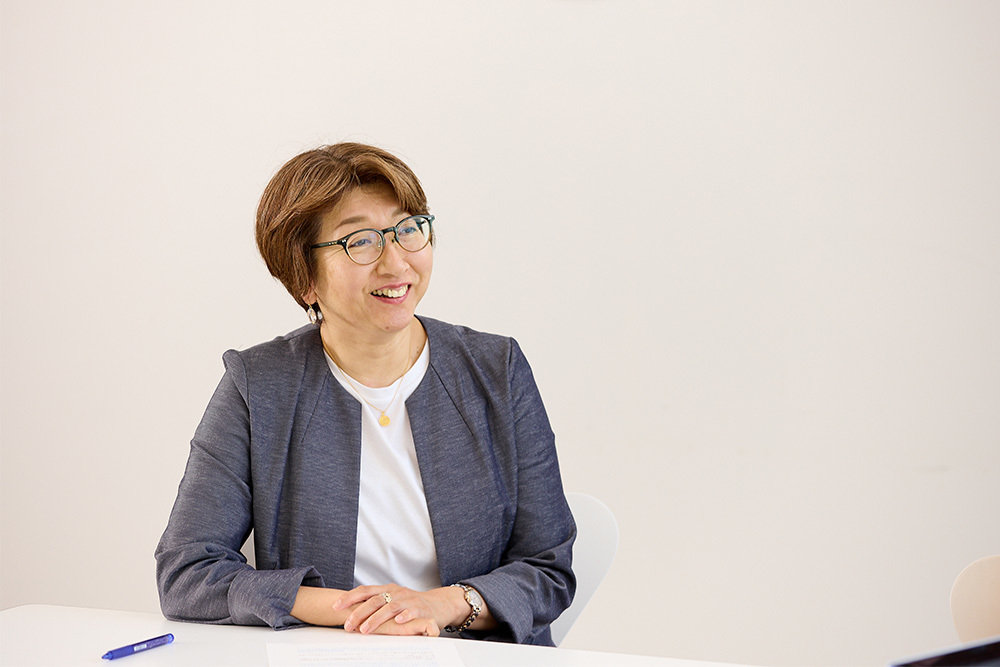
Nakano: Please briefly reintroduce yourselves and describe your roles for the CLAMP exhibition. I work as a planner at Dentsu Inc.'s Business Transformation Creative Center. For the CLAMP exhibition, I served as Creative Director, overseeing all creative aspects including exhibition planning, concept development, experience design, and artwork.
Yoshimura: After studying art history at university and manga at graduate school, I now work as the only manga specialist researcher at a national museum, focusing on curation. Since the 2015 exhibition "Nippon's Manga, Anime, and Games" (hereafter referred to as the Nippon Manga Exhibition), our museum has focused on exhibiting content-based works. I have been involved in the Shinbi project since 2017. For each exhibition, two researchers are typically assigned as a team. For the CLAMP exhibition, I served as the lead researcher and Masumi as the assistant.
Masumi: My specialization is modern and contemporary Japanese art and museum education, not manga. However, due to my involvement with events like the Japan Media Arts Festival, I've worked on content-based exhibitions alongside curators since joining the museum in 2015. For the CLAMP exhibition, I primarily served as the liaison and manager for the Shinbi side.
Nakano: Shinbi is a rare museum that doesn't maintain its own collection and instead presents genre-less exhibitions. What prompted the start of content-based exhibitions like manga and anime in 2015?
Masumi: It began with a proposal from Yasushi Aoki, who was director at the time. During his frequent overseas trips, he witnessed firsthand the popularity of Japanese content and suggested, "It's absurd that a national museum isn't featuring something with this much international appeal."
Regarding national initiatives for content, a plan for a "National Media Arts Center" had been proposed around 2009 but had stalled. Having previously served as Commissioner of the Agency for Cultural Affairs, Aoki recognized manga and anime as crucial genres for enhancing Japan's global presence. After becoming director of the Shinbi Museum, he was determined to pursue this field. Consequently, the "Nippon Manga Exhibition" was organized in 2015, with me overseeing it.
Nakano: From my perspective, manga is "entertainment." It feels somewhat distant from the art typically exhibited in museums. But from the researchers' viewpoint, can it be considered a work of art?
Masumi: As we saw with the CLAMP exhibition, I've observed many visitors becoming deeply captivated and engrossed by the original manga artwork. This makes me believe it is indeed suitable for museum presentation. That said, I personally try not to get too hung up on whether it is or isn't art.
Japanese manga is undeniably recognized worldwide as an outstanding cultural achievement, and I personally think it's wonderful. Even if some people currently think "manga isn't art," I believe that in about 200 years, it will undoubtedly be considered art. At the same time, by exhibiting it at Shinbi, we are, in a sense, posing that very question to our visitors.
The deciding factors were "unique activity style" and "historical evaluation as an artist"
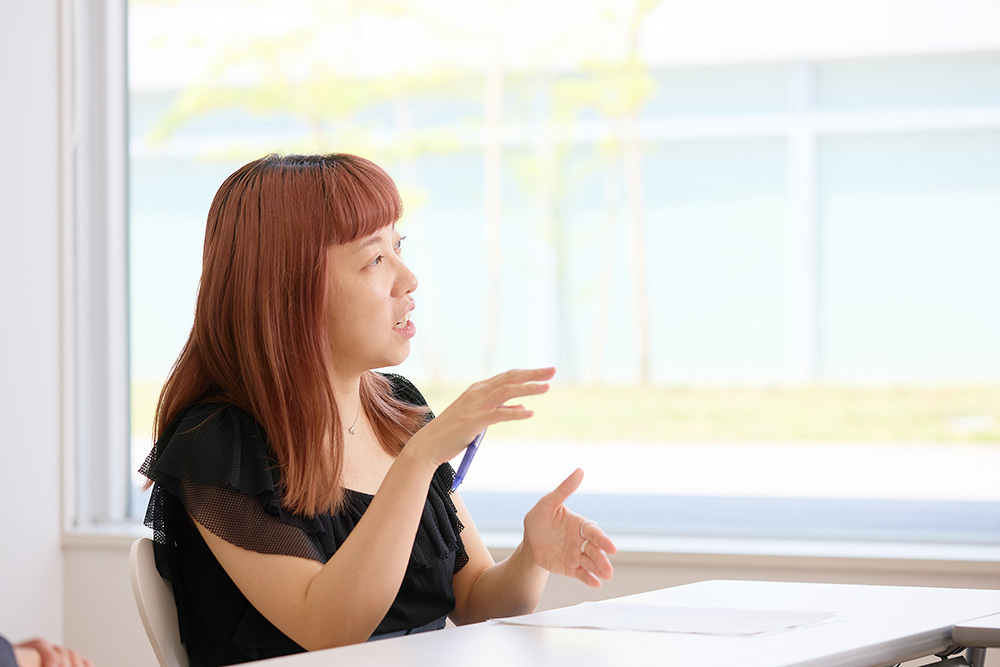
Nakano: What was the deciding factor in choosing to hold the CLAMP exhibition at the Shinbi this time?
Yoshimura: When deciding which artists to exhibit at the National Art Center, our primary criterion is whether the "National" can confidently present them as part of art and culture. For manga artists, we must examine the role and influence the artist or their work has had on manga culture, and further consider whether it is something that should be passed on to the next generation.
CLAMP-sensei became professional artists originating from doujinshi conventions like Comic Market, which became globally renowned events. While doujinshi is an amateur activity, it has produced outstanding artists who gained significant support. Among them, CLAMP-sensei is historically recognized as particularly exceptional artists. This fact is shared among manga researchers, and personally, even before we approached them, I had considered them as candidates for future exhibitions.
Nakano: So you had them in mind as a candidate from the start! In 2018, we held the "Cardcaptor Sakura Exhibition" (hereafter referred to as the Sakura Exhibition), which focused on one of CLAMP's works, in a traditional gallery space. That was the first time I personally saw CLAMP's original artwork, and I was struck by a completely different sensation than when viewing it in print. I truly felt the immense power of the original artwork.
When Dentsu Inc. handles exhibitions like this, we often prioritize creating immersive experiences using video and other media. However, for the CLAMP exhibition, I felt it should be held in an environment where visitors could fully appreciate the power of the original artwork. That's when Shinbi came to mind as a venue. I didn't have any connections there and thought it might be impossible, but I sent our proposal through the application form listed on their official website. I was incredibly happy when they responded.
Yoshimura: Regarding the selection of CLAMP, there was actually another factor: the social context within the art world. Aside from comprehensive exhibitions like the Nippon Manga Exhibition, which covered a wide range of genres, the content-focused exhibitions we'd held at our museum up to that point—featuring directors like Makoto Shinkai, Hirohiko Araki, and Hideaki Anno—had inevitably leaned toward "male solo artists." The reality is that the majority of people working in the art field are women, yet female artists are rarely featured in exhibitions or as subjects. This issue of gender imbalance and the need to raise questions about the industry as a whole has gained significant attention in recent years. This isn't limited to manga; it applies equally to painting and architecture.
Given this context, it seems only natural that female creators should be the next focus. In the case of CLAMP, they operate in an exceptionally rare format as a four-member unit. Precisely because of this, their skillful execution of multi-self-production is particularly fascinating and became one of the deciding factors.
Rather than focusing on a "fan perspective," we aim to reflect the social value of CLAMP's work.
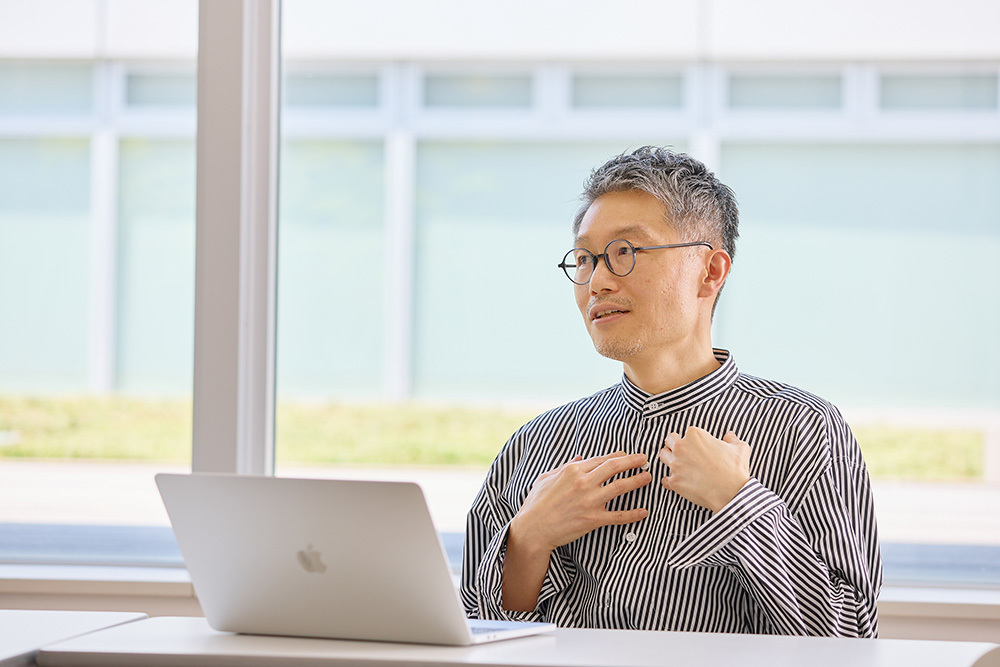
Nakano: Before asking about the CLAMP exhibition displays, could you share any unique approaches taken in previous manga or content exhibitions held at Shinbi?
Yoshimura: At Shinbi, the special exhibition hall is approximately 2,000 square meters with not a single pillar. This means we can freely arrange anything, but conversely, it also means we have the mission of somehow filling that vast space. I believe this is one of the defining characteristics of exhibitions held at our museum.
This space is well-suited for creating a world by scattering various exhibits here and there. However, manga original artwork has a largely fixed format and is small in size. Considering factors like visibility, we basically cannot display works above eye level, so figuring out how to fill the space becomes a challenge every time.
Amidst this, in 2020, we held the exhibition "MANGA City TOKYO: Japan's Manga, Anime, Games, and Special Effects 2020." Originally held in Paris in 2018, this exhibition showcased each content type while also presenting "the city of Tokyo" itself, which is fused with these contents. When held in Paris, we had to fill an even larger space than ours, approximately 3,500 square meters.
Therefore, we constructed a massive 1/1000 scale model of Tokyo, approximately 16 meters wide and 21 meters long. We projected anime and game footage onto an enormous screen surrounding this model and created balcony-like display spaces around it to showcase original manga artwork. It was challenging, but this vast space allowed us to realize ideas unimaginable for a typical content exhibition.
Nakano: That's fascinating. For the CLAMP exhibition, while we did partition the space with walls, the core concept was to fill the approximately 2,000-square-meter, high-ceilinged space primarily with original artwork. As we spent time together selecting the artwork, did you notice any differences between Dentsu Inc.'s approach and the methods you've used previously?
Masumi: Exhibitions fundamentally require "physical objects" to exist. For us, the starting point is always how to present those objects, and we develop the concept—what to show and how—in parallel. What really stood out to me about Dentsu Inc.'s approach was that they began by establishing a "catchphrase" first.
This time, with the clear "object" of "CLAMP works," the process was novel: first establishing catchphrases for each zone—C (Color), L (Love), A (Adventure), M (Magic), P (Phrase)—mirroring the authors' names as the core concept. After unifying everyone's vision around this, we proceeded to select the original artwork.

Nakano: I see. This approach is quite typical for an advertising agency. In advertising, when considering how to communicate with consumers, the crucial task is "translation" – figuring out how to present the product in front of you to make it look appealing and ensure it's understood correctly. Therefore, even for events, we first consider what value emerges when connecting the world, consumers, and the work (content), decide on the "message" to convey, and then plan the communication methods and expressions.
In this case, I hadn't read CLAMP's works in real time, but before planning, I read "Cardcaptor Sakura" and thought it was an amazing work. I approached it from the perspective that if I created a message based on why I found it amazing, even people unfamiliar with CLAMP's works could experience an exhibition that felt "interesting" and "fun."
One reason for this approach was my conviction that we could never match the sheer passion of the fans. I witnessed the immense fervor of CLAMP fans firsthand at the Sakura exhibition, and the staff themselves, who had long loved CLAMP's work, shared that same level of passion.
For this exhibition, I read all of CLAMP's works at least three times each, but the core fans have surely read them far more. So saying "we're creating it from a fan's perspective" felt presumptuous. No matter how much respect I had for the works and the culture, I was deeply afraid that someone with that level of passion would surely see through it and realize it wasn't truly from a "fan's" viewpoint.
Masumi: I completely understand that feeling. For example, at a Western art exhibition, the curator likely knows more than the visitors. But this time, the visitors absolutely know the works better. I constantly felt that if we misjudged this situation, we could get badly burned.
Nakano: Exactly. That's precisely why I changed my approach. I started thinking about why I found CLAMP's works interesting when I first read them, and whether there were points where the world of the work intersects with today's society. For example, "Cardcaptor Sakura" was created before LGBTQ+ was widely discussed, yet the character relationships feel like they don't adhere to fixed gender concepts. With "Tokyo Babylon," parts of the Tokyo depicted in the story back then connect to the Tokyo of today. By exploring these perspectives, I thought we could uncover new angles revealing the depth of the work, and that's how we developed the message and structure.
Before selecting the original artwork for the exhibition, we held a study session titled "The Appeal of CLAMP" with Mr. Yoshimura and Mr. Masumi for about a year. Through that session, we worked on identifying points that make CLAMP's works interesting not only to today's society but also to people who aren't manga fans. Without that time, I don't think we could have created this concept.
The museum experience reveals that even things "I don't understand" hold value.
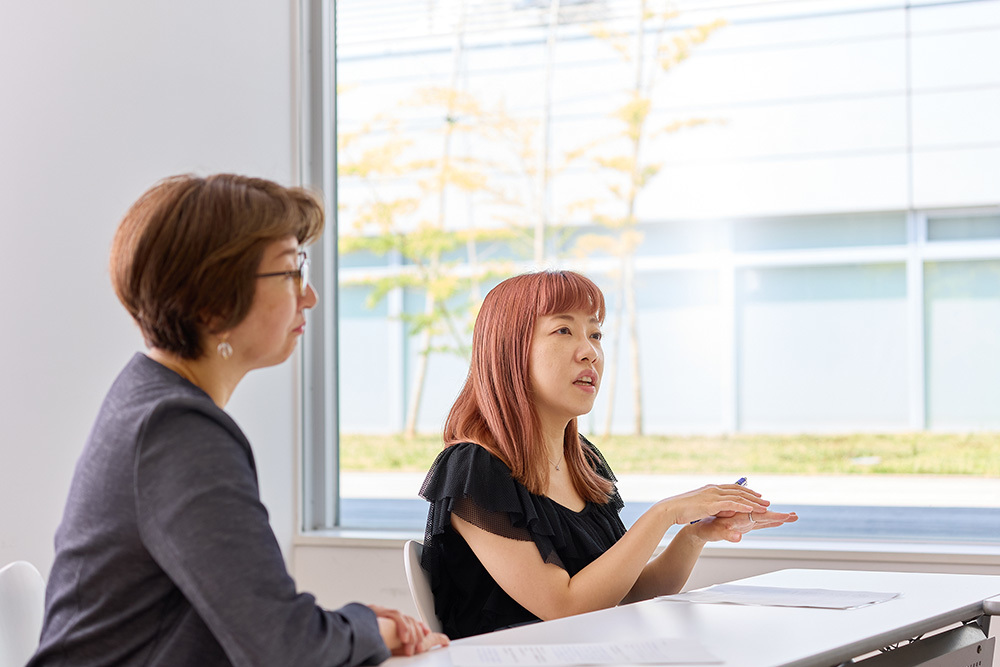
Yoshimura: This time, I felt a new kind of chemistry emerge from those discussions. In the case of Dentsu Inc., their approach involves breaking down the appeal of the work to find its message and symbolic keywords. On the other hand, as historical researchers, we seek out the "facts" that show CLAMP-sensei was superior, innovative, or exceptionally remarkable within history. While the work is similar, we consistently emphasized the need to ensure this "objectivity."
This is very much a museum-oriented perspective, but to properly evaluate cultural value, we must consider both the "internal" appeal—like the work's inherent message—and the "external" appeal—its societal impact and position. Thoroughly discussing this point and collaborating to create an exhibition together was a new experience.
Furthermore, since manga is an ongoing, evolving medium, a vast amount of information circulates about it, and no single person can know it all. That's precisely why having Dentsu Inc. and various other staff members join us, forming a team to create this, felt so meaningful.
Nakano: Everyone spoke openly about their convictions and passion, in the best sense. It became a space where everyone involved, without ego, laid bare their own perspectives on CLAMP's strengths and clashed them head-on. In that sense, the "Love" area achieved a good balance precisely because it was discussed by both staff who were original CLAMP fans and those with a neutral perspective. For example, Ms. Masumi often gave us feedback like, "With this theme, does arranging the original artwork this way make the intent clear?"
Additionally, discussing information architecture with the two of them was incredibly educational. For instance, we debated the balance of how much "explanation" to include to support the theme and flow. The Dentsu Inc. side tends to add captions or dialogue to provide explanations, assuming the audience will understand. This approach stems from the advertising world, where conveying intent is essential. In contrast, we received feedback like, "Since it's art, perhaps we should keep explanatory information to a minimum and leave the rest to the viewer."
Masumi: What I found interesting is that advertising really does have to "convey" (a certain kind of correct answer). Manga and art aren't like that; I think the work itself "grows" depending on the viewer. In other words, even if there's a certain answer you want to convey through the work, I believe a large part of that "correct answer" is entrusted to the viewer.
Nakano: Earlier, you mentioned not being fixated on whether something is art or not. The reason I wanted to hold the CLAMP exhibition at Shinbi was precisely because I wanted people to experience CLAMP's work as art.
An art experience isn't about conveying information 100%. It's about sensing the diverse values inherent in the work. This holds true even if the viewer finds those values unacceptable. It's a place for the "experience of knowing" – realizing, "Oh, this perspective exists too." More than that, feelings like "I don't get it" or "I dislike it" are also valid values. I believe museums hold the value of encountering things that aren't easily understood, things that say, "This is beyond me."
Mashu: That's right. There are as many ways to receive art as there are viewers, so it's necessary to "communicate, yet not fully communicate," leaving room for the viewer's interpretation. We create exhibitions while considering this balance between the two.
Presenting facts rather than interpretations to draw out visitors' "own discoveries"
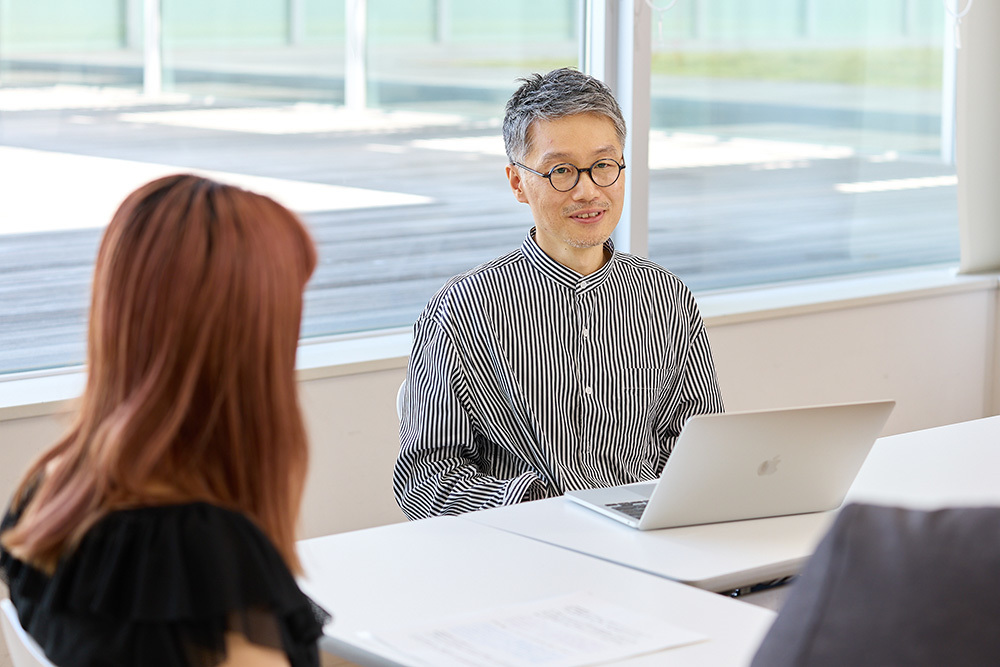
Nakano: Regarding the "facts" Mr. Yoshimura mentioned, I initially designed the "Love" area with more of my own interpretation. Your point really made me realize: visitors aren't coming specifically to see my "interpretation." So I abandoned the abstract, meta-perspective approach I'd been using and switched entirely to cutting the content based on the "actions" performed by the characters within the original artwork – essentially, facts.
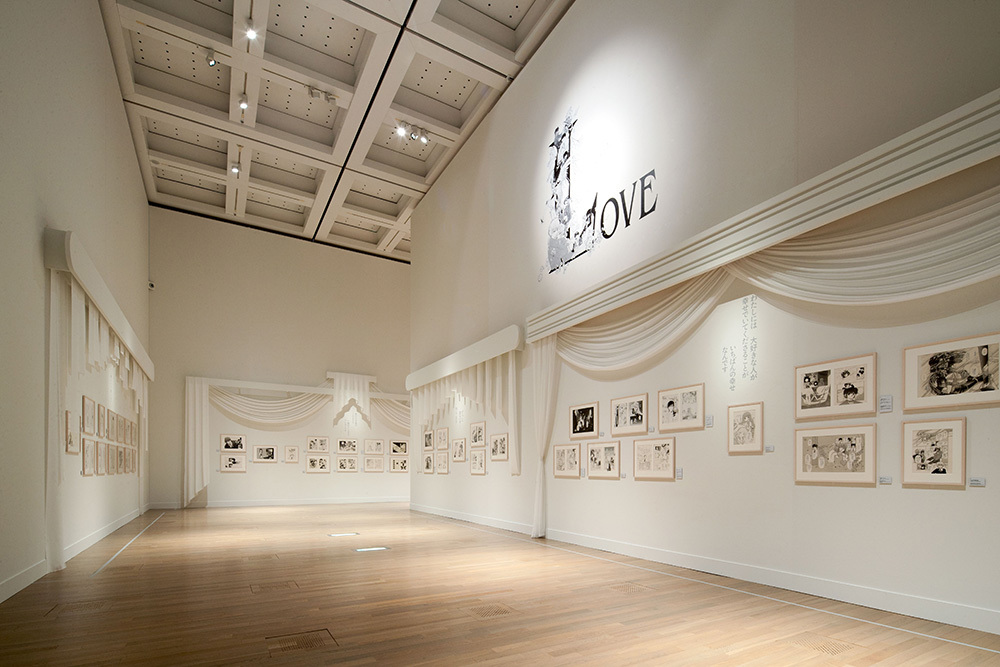
Yoshimura: If we impose interpretations like "This is what this form of love (friendship) looks like," it becomes prescriptive. But categorizing by actions depicted in the original artwork—like "handshakes" or "hugs"—becomes factual. We spent considerable time aligning our views, thinking this approach would let fans interpret it through their own feelings.
For example, even if production staff interpreted a scene as a "love confession," unless explicitly stated in the work's text, it's possible CLAMP didn't intend it that way. Visitors might also perceive it differently. There's a difference between the curator "interpreting" facts and presenting that interpretation, versus presenting the facts themselves and letting visitors discover something for themselves. In fact, I think it's crucial to avoid adding subjective interpretations as much as possible, ensuring objectivity through the facts themselves when planning the exhibition layout.
Nakano: Exactly. If we present too much about the "exhibition's theme" or "what this flow signifies," it becomes noise that interferes with viewing. Visitors pay to purely enjoy the art or discover new charms in CLAMP's work. It's better to avoid excessive intentional guidance, letting them experience it with an open mind. When they discover for themselves, "Oh, so this scene had that meaning," the impact is greater, and it truly sinks into their hearts as something important. If someone sees multiple original artworks during their visit and still wants to return, that "discovery for themselves" is likely a major factor.
Yoshimura: On the museum side, one concern was that simply displaying original artwork might make the "experience" feel too much like reading a manga, reducing it to mere viewing. Since visitors physically come into the large exhibition space, that "spatial experience" is also extremely important. This is Dentsu Inc.'s area of expertise. I think elements like video projections or attractions where visitors draw stickers with character dialogue and stick them on walls are fine additions. We didn't want to dismiss those; we aimed for the right balance.
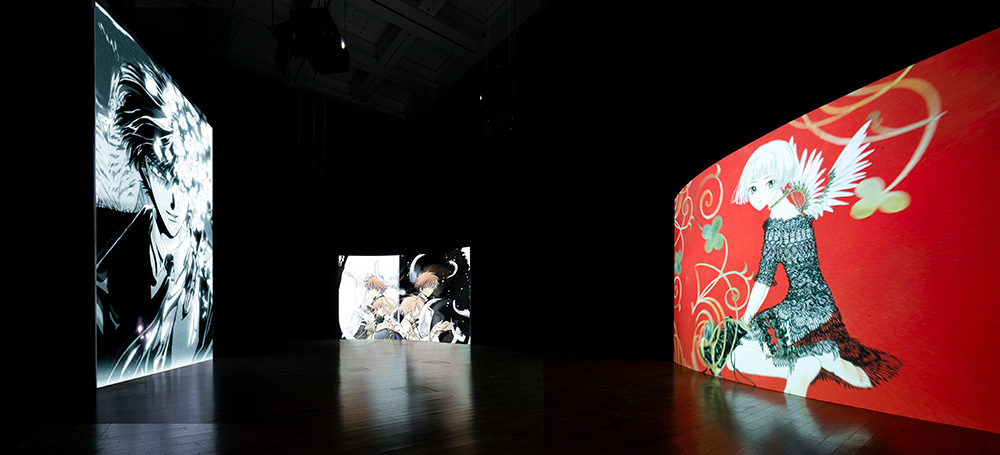
Nakano: Thank you. Finally, could you share your thoughts on Dentsu Inc. participating in future museum exhibitions like this, or on collaborations like the one we've done?
Masumi: Having players from other industries like Dentsu Inc. join us has been a learning experience for us. When working together, the process of aligning our values—the things we want to protect as a museum, like "objectivity," "facts," and "respect"—with those of our partners is crucial. When working with new partners, differences in professional approaches and "language" naturally cause friction. But navigating this helps us break out of our shells. When we see them as allies or partners moving toward a shared goal, this process allows us to create better exhibitions and stronger relationships. If the opportunity arises again, we'd definitely like to collaborate.
Was this article helpful?
Newsletter registration is here
We select and publish important news every day
For inquiries about this article
Author

Takako Mashu
The National Art Center, Tokyo
Director of the First Planning Office, Principal Researcher
From 1997, worked at the Shimane Art Museum and the Iwami Art Museum in Shimane Prefecture. Served as an Arts and Culture Research Officer at the Agency for Cultural Affairs in 2011, and has been a Senior Researcher at the The National Art Center, Tokyo since 2015. Organized the "Nippon no Manga*Anime*Game" exhibition, which toured to Myanmar and Thailand. Since then, has actively engaged in exhibitions introducing Japanese content overseas. He organized "MANGA⇔TOKYO" (Paris, 2018) and collaborated on the "Manga" exhibition held at the British Museum in 2019.

Rei Yoshimura
The National Art Center, Tokyo
Principal Researcher
After serving as Curator of the Manga Department at Kawasaki City Museum (2014–17), he was appointed Visiting Researcher at The National Art Center, Tokyo in 2017, assuming his current position in 2021. Major exhibitions curated include "MANGA City TOKYO: Manga, Anime, and Games in Japan 2020," "Hideaki Anno Exhibition" (2021), "The Crocodile Spins: Satoru Tamura" (2022), "NACT View 02: Nezumi-kke" (2023), and "CLAMP Exhibition" (2024), among others.

Ryoichi Nakano
Dentsu Inc.
BX Creative Center
Creative Director / Planner
After working at a printing company and a PR agency, he joined Dentsu Inc. Following experience in sales and production, he transferred to the strategy division. Later, in the CR division, he handled everything from strategy to communication planning, integrated creative work, exhibition planning and management, creative direction, and product development. He has received awards including Cannes, One Show, Clio, Adfes, and the Japan Spatial Design Grand Prize. His publications include "Rugby Rules: Super Beginner's Edition."


